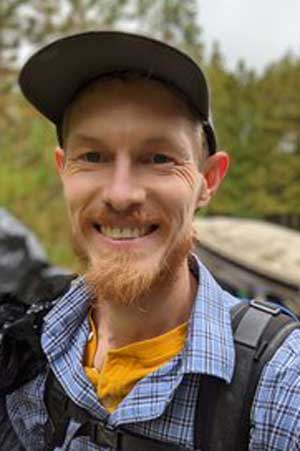
Keir Wefferling
Assistant Professor & Herbarium Curator
MAC 212
Natural and Applied Science
Keir Wefferling (he/him/his) is the Curator of the Gary A. Fewless Herbarium in the Cofrin Center for Biodiversity and an Assistant Professor in Biology. He has been at UW-Green Bay since 2020 and teaches Field Botany and Plant Biodiversity. Most of Keir's work to date focuses on plant systematics: describing plant biodiversity and evolutionary relationships among lineages. Recently, Keir has been spending more time in the bogs and fens of the region and is learning to identify mosses and other bryophytes. When he's not working, he's botanizing, playing outside, or reading about moss or Wisconsin's natural plant communities.
Website
https://keirwefferling.com/
Research Interests
My research focuses on cryptic biological diversity in plants, especially in the seedless lineages of mosses and ferns. Most of my work is at the species to population levels and in polyploid species complexes. I aim to delimit and describe species, trace functional trait evolution, identify and estimate the timing of genome duplication and merger events, and map the geographic and ecological distribution of lineages.
I've recently become more interested in the functioning and integrity of peat-accumulating wetlands in the Great Lakes region, and in identifying and documenting the bryophytes (the non-vascular land plant lineages: mosses, liverworts, and hornworts) in these diverse and important carbon-storing plant communities.
Education
Ph.D., Biology, University of Wisconsin–Milwaukee; B.S., Biology, University of Wisconsin–Milwaukee.
Website
https://keirwefferling.com/
Research Interests
My research focuses on cryptic biological diversity in plants, especially in the seedless lineages of mosses and ferns. Most of my work is at the species to population levels and in polyploid species complexes. I aim to delimit and describe species, trace functional trait evolution, identify and estimate the timing of genome duplication and merger events, and map the geographic and ecological distribution of lineages.
I've recently become more interested in the functioning and integrity of peat-accumulating wetlands in the Great Lakes region, and in identifying and documenting the bryophytes (the non-vascular land plant lineages: mosses, liverworts, and hornworts) in these diverse and important carbon-storing plant communities.
Education
Ph.D., Biology, University of Wisconsin–Milwaukee; B.S., Biology, University of Wisconsin–Milwaukee.